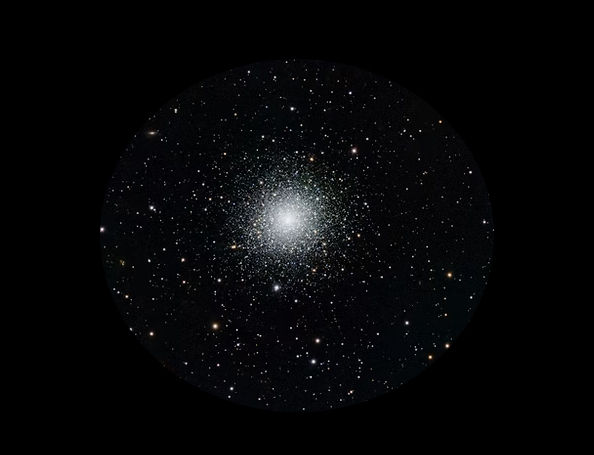Starstruck: A Guide to Stars & Stargazing
- Katherine Miller
- Jul 18
- 5 min read

There’s something deeply humbling about staring up at the night sky, knowing you’re looking at the same stars our ancestors navigated by, wished on, and told stories about. But those twinkling dots aren’t just pretty lights—they're massive nuclear engines, some hundreds of times bigger than our Sun, scattered across a mind-blowingly vast universe.
If you've ever wondered what stars are, how to see or photograph them, or why they don't show up in space photos, then settle in, stargazer. Let’s go on a cosmic journey—starting right here in the Australian night sky.
The Stars Above Us: What Are We Looking At?
To the naked eye, stars can seem like little more than pinpricks of light. But each one is a sun—some small, some gigantic, some long gone but still shining in our skies due to the sheer distances involved.
Stars are mostly made of hydrogen and helium, fusing atoms in their core to release insane amounts of energy. That energy is what gives stars their light—and keeps them from collapsing in on themselves.
But not all stars are created equal. Some are small and cool, others are hot and massive. And just like people, they go through life stages—from baby to (sometimes explosive) death.
A Quick Crash Course in Star Types & Sizes
Stars are classified by their size, colour, and temperature, using the letters O, B, A, F, G, K and M. (Astronomers like to keep us guessing.)
O-type: Massive, rare, blue-hot. The rockstars of the galaxy.
B-type: Still enormous, found in stellar nurseries.
A-type: Bright white stars like Sirius, our night sky’s MVP.
F & G-type: Middle-ground stars. Our Sun is a G2 dwarf.
K & M-type: Cool, red, long-lived. Some burn for trillions of years.

To put things into perspective: Betelgeuse, a red supergiant, could swallow our entire solar system out to Jupiter. Meanwhile, tiny red dwarfs are barely bigger than Jupiter itself.
The Life of a Star (It's Dramatic)

Stars are born in nebulae, where dust and gas collapse under gravity and ignite nuclear fusion. From there, their life path depends on how massive they are:
Low-mass stars (like our Sun): Become red giants → shed their outer layers → end life peacefully as white dwarfs.
Massive stars: Go supernova and either collapse into neutron stars or form black holes. Go out with a bang.

Fun fact: all the elements in your body (carbon, oxygen, iron) were forged in the core of a star. You’re made of stardust.
Stars in Australian Night Skies
The Southern Hemisphere sky is elite. Here are some key stars to spot:
Sirius – Brightest star in the night sky.
Canopus – Bright, white, and a Southern classic.
Alpha Centauri – Closest star system to us.
Betelgeuse – Reddish and unpredictable.
Crux (Southern Cross) – Our directional go-to.
Add in the Magellanic Clouds, Milky Way Core, and even naked-eye globular clusters like Omega Centauri, and you’ve got a visual feast.
But Can You See Stars During the Day?
Not unless you’re Superman. Or using serious equipment.
The Sun’s brightness drowns out everything. Technically, you can spot Venus or Sirius in the day if you know exactly where to point with a properly aligned telescope, but for beginners, it's just not practical. Stick to the night shift.
What Do Stars Look Like Through a Telescope?

Surprise! Even with a telescope, stars still appear as pinpoints. No fiery textures, no close-up flames—just sharper and often more colourful versions of what you see with the naked eye.
To get more wow factor, focus your scope on star clusters like the Jewel Box, nebulae, or planets where details shine.
So, How Do You Photograph Stars?
Whether you’re a total beginner or getting serious with your gear, here are three ways to shoot stars, from basic to boss mode.
Option 1: Smartphone + Visual Telescope
Yes, you can shoot the stars with your phone through a telescope! Here's how:
What You Need:
A visual telescope (e.g. Sky-Watcher 130/650, Heritage 150P).
A mobile phone adapter (Sky-Watcher’s universal one is solid).
A steady mount or tripod.
How-To:
Attach your phone to the eyepiece using the adapter.
Use the camera app (or a manual camera app like ProCamera or NightCap for iOS).
Focus on a bright star or the Moon using manual focus if possible.
Adjust exposure—try ISO 800–1600 and shutter 1–3 seconds for stars, shorter for Moon/planets.
Use a timer or remote shutter to avoid vibrations.
Pro Tip: Start with the Moon or Jupiter, they’re bright and forgiving. Stars will still be dots, but with practice and stacking, you’ll start getting results.
Option 2: DSLR/Mirrorless Camera + Tripod (No Tracking)
Great for wide Milky Way shots.
Gear:
Any DSLR or mirrorless camera (Canon, Nikon, Sony, etc.)
A fast lens (e.g. f/2.8)
A solid tripod.
Settings:
15–25 sec exposure for a wide lens, 2-3 seconds for longer focal lengths
ISO 3200
f/2.8
Focus manually to infinity.
Use the 500 Rule to avoid star trails: 500 ÷ focal length = max exposure time in seconds.
Option 3: Astrophotography Setup (The Real Deal)

If you're serious about astro imaging, you're going to need to invest in proper gear. A solid tracking mount should be your No. 1 priority.
Recommended Beginner-Friendly Setup:
Mount: Sky-Watcher Star Adventurer GTi or Wave 100i.
Scope: Sky-Watcher Evostar 72ED or Quattro 150P (if you're going Newtonian).
Camera: DSLR or cooled astro cam (like ZWO ASI533MC Pro).
Guiding: Add a guide scope + ASI120MM Mini for long exposures.
Tips:
Polar align using Sharpcap or NINA. Don't bother trying to freestyle it with a polar scope.
Use software like NINA, SharpCap, or the ASIAIR to automate captures.
Stack images in DeepSkyStacker or Siril (they're free), process in Siril, Photoshop, or Pixinsight, if you have the funds and patience to learn, you won't go back, trust me.
Want the colours to pop? Try a mono sensor paired with narrowband filters like Antlia 3nm SHO for nebulae; they cut through light pollution like a hot knife through butter.
Why Don’t Stars Show Up in Moon Photos or Space Shots?
The Moon is bright. Like, burn-your-eyes bright. When astronauts took pics on the Moon, they exposed for the surface, so stars didn’t show up. It’s not a conspiracy, it’s just how cameras work.
Stars only appear when exposures are long and the surrounding scene is dark. So if you're snapping the Moon with stars in the background... adjust expectations (or try a composite image).
Stars are ancient, powerful, and dazzling in every sense, but they don’t give up their secrets easily. Whether you’re admiring them with the naked eye, peeking through a scope, or diving into the deep end of astrophotography, the key is patience and persistence (and maybe snacks).
No matter your gear or experience level, there’s a way to connect with the stars. And down here in Australia? You’ve got front-row seats to some of the best views in the world.




Comments